Some of the most common kinds of workplace injuries are sprains and muscle strains sustained on the job. These injuries aren’t life-threatening, obviously, but that doesn’t mean they aren’t serious. They can cost businesses real money in lost productivity and, in some cases, worker’s compensation claims. That’s why safety in the workplace must always be taken seriously by every business.
Sometimes, repetitive job functions cause employees to ignore or forget about common safety measures, leading to injury. Practicing preventative measures daily helps employees avoid painful accidents that require time away from work and potentially lost wages for both the employer and the employee.
To increase workplace safety, WSS encourages all workers to follow smart, preventative measures to avoid strains and sprains on the job. Our occupational medicine professionals constantly stress the importance of prevention because, unlike many illnesses, workplace accidents can almost always be avoided.
Lifting, pushing, and overreaching are the most common causes of strains and sprains. Jobs that require employees to sit, stand, or bend in awkward positions for long periods of time often cause stress and strain on certain muscles. The majority of strains and sprains affect the back, arms, and shoulders, and many of occur due to improper handling of materials.
Here are some important preventive activities that should be standard operating procedure at your workplace:
- Always life by bending at the knees, lifting with leg strength, not the back.
- Carry all loads close to the body. Injuries occur when workers pull or lift a heavy or awkward object without help or attempt to lift an object while twisting from the waist.
- A avoid lifting upward unnecessarily while carrying a heavy load. Keep as much of the load as possible at waist level.
- Get help lifting heavy loads. Never try to move or lift an object that’s too heavy by yourself. If possible, break the load down into smaller parts. If the load can’t be broken down, find help from a mechanical device or lift it with another worker.
- Ensure all moving equipment works properly. Otherwise, it may cause unnecessary strain just trying to get it to work. If the wheels on a cart are not aligned, it’s more likely to strain the arms, shoulders, and back.
- Stretch every day to increase flexibility. Take breaks to let your shoulders and neck muscles go limp, and swiveling the head or arms or flexing hands and fingers. If chronic strain happens, muscles become less able to withstand strenuous activity and grow more prone to injury.
- Change positions frequently at work. Chronic strain due to an unchanging work position weakens the back, arms, and shoulders. Proper ergonomics is important, and working heights should be adjusted to prevent slumping or excessive reaching.
Keep in mind that it’s important to always take care of your entire body with exercise, proper posture, a sensible diet, and adequate rest. If muscles or ligaments weaken over time from lack of exercise or age, strain or sprains are more likely than if an employee is physically fit.
Workplace Safety Screenings creates customized occupational medicine plans for businesses across the Houston Area to help prevent strains, sprains, and other workplace injuries and illnesses. We keep Houston working! If you’d like a free consultation on how we can help your business eliminate employee injuries and downtime, don’t hesitate to call us now at (855) 974-4960!

.png?width=500&height=500&name=Blue%20and%20White%20Classic%20Shield%20Financial%20with%20Star%20Logo%20Design%20(1).png)


